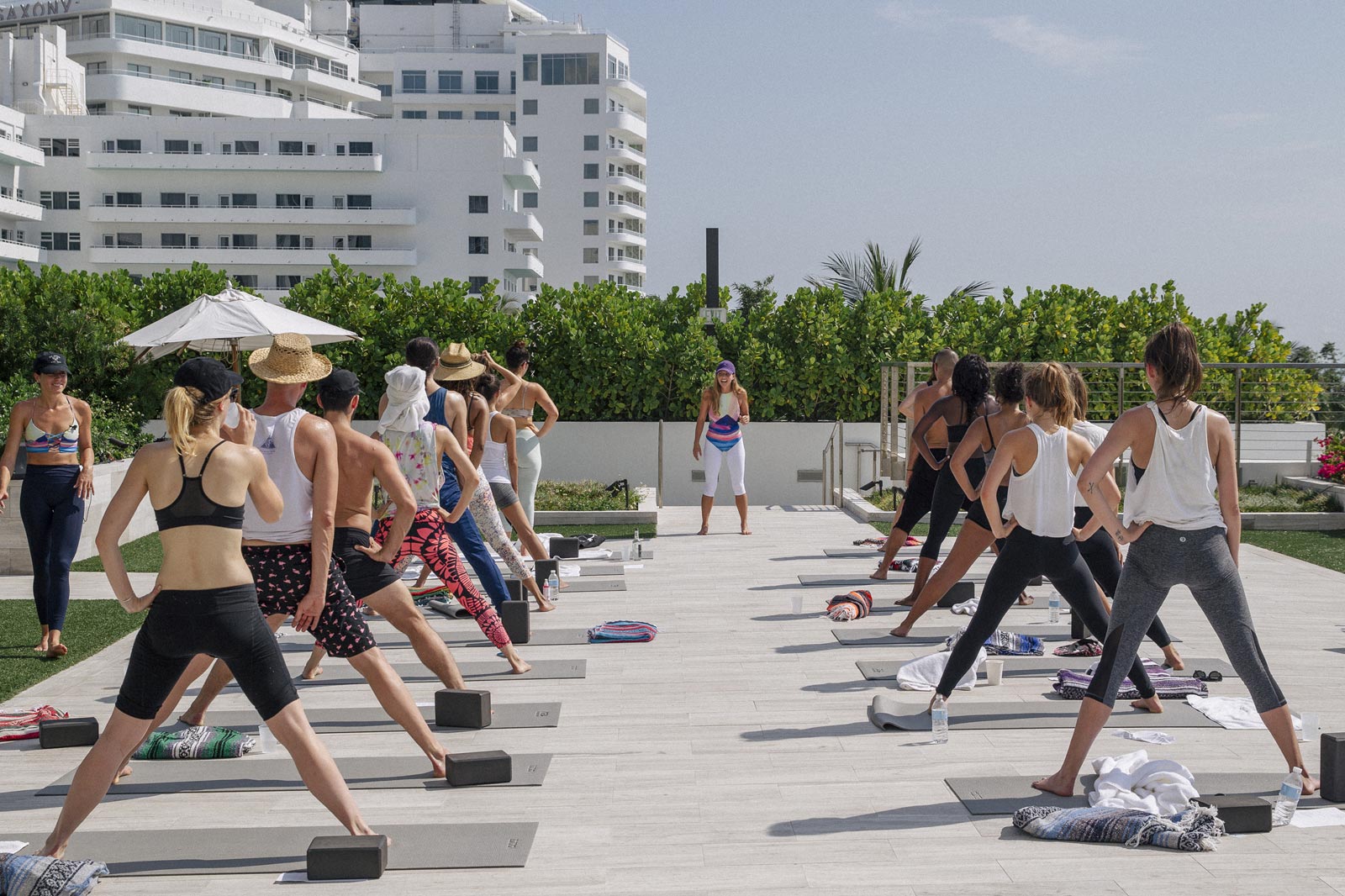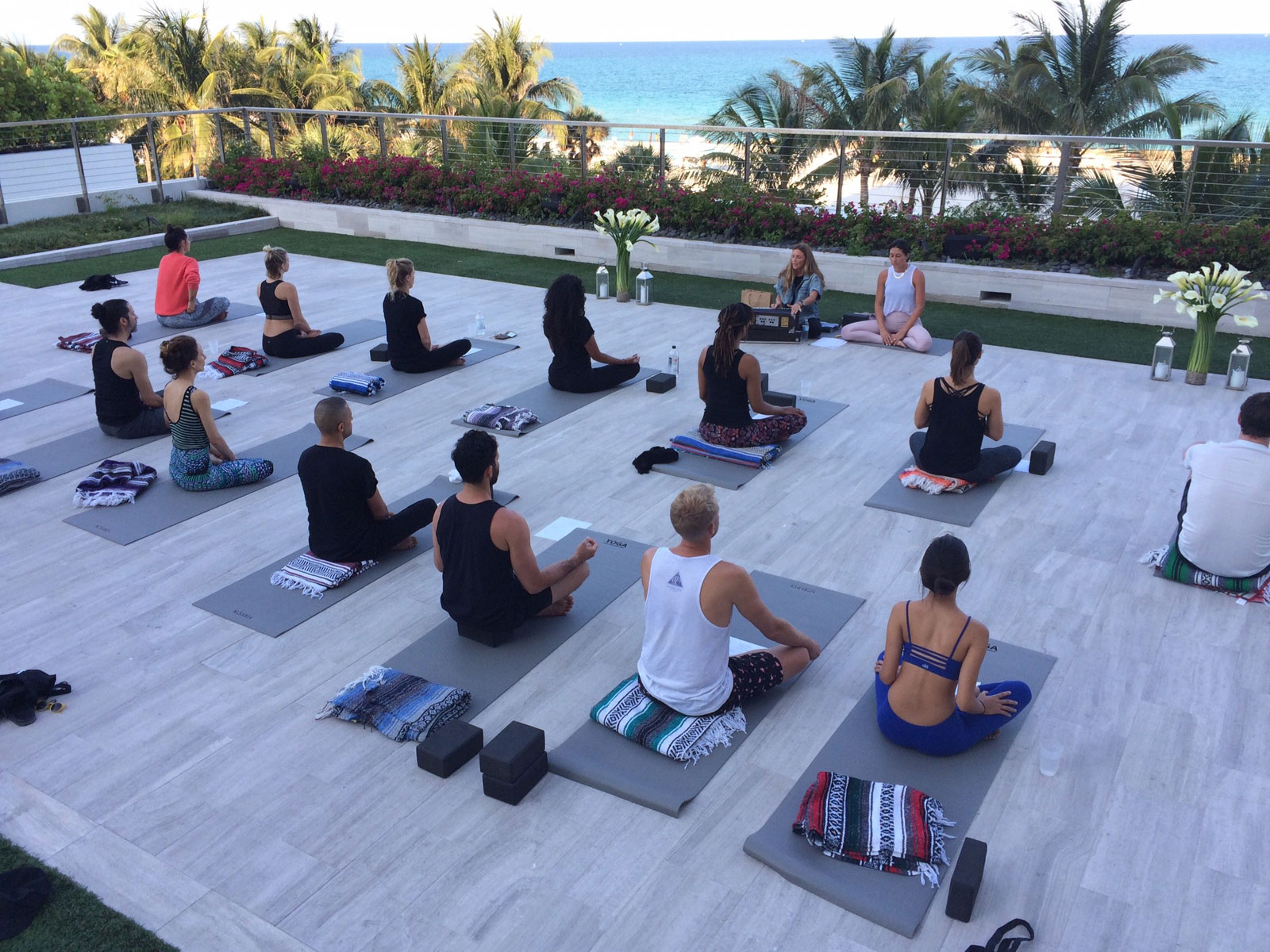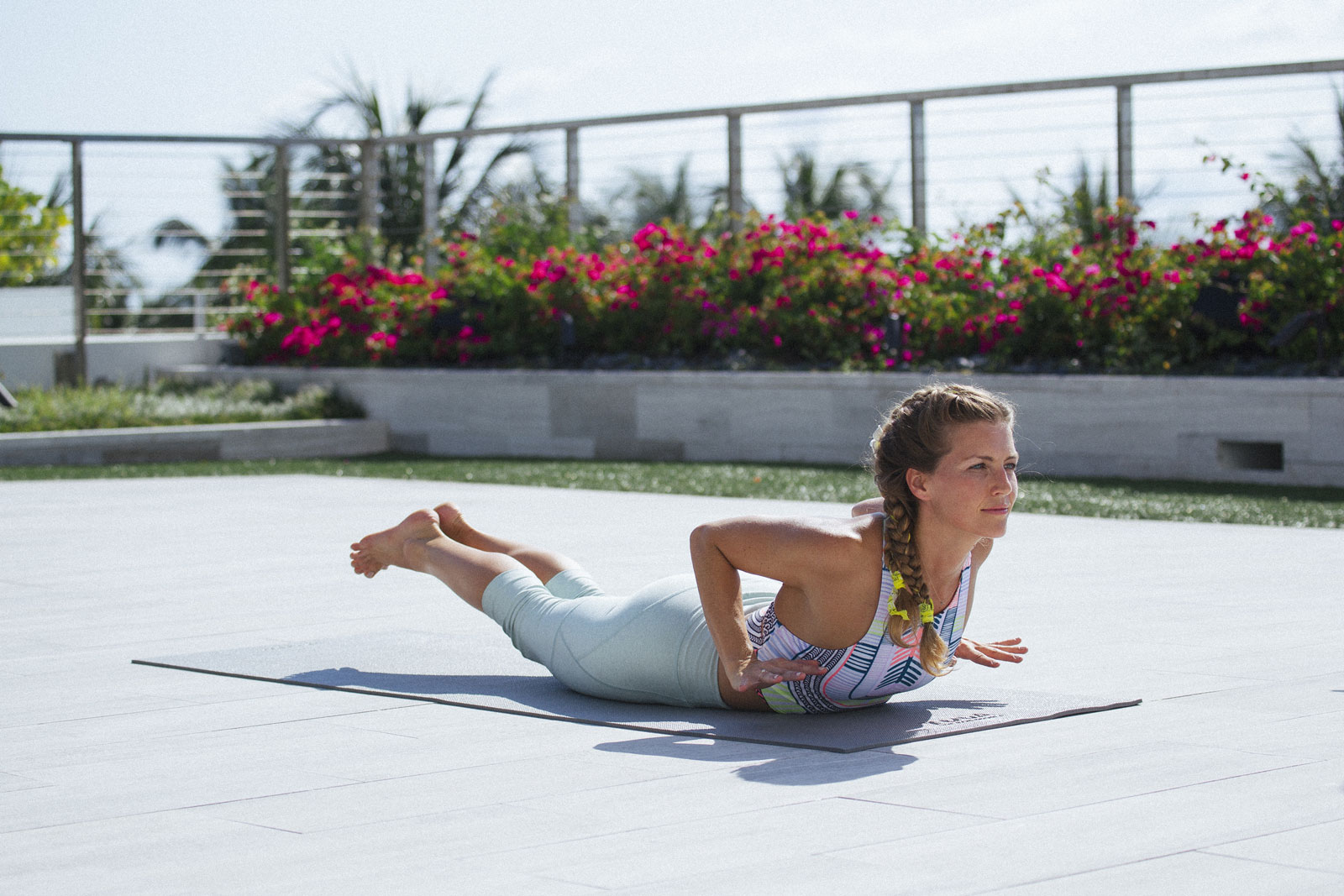Yoga For Bad People
From global retreats to their new EDITION Hotel partnership, the founders discuss accessibility and flexibility

Don’t be fooled by the name, Yoga For Bad People (YFBP) isn’t just for bad people; it’s for everyone. Inclusivity is a key message from founders Heather Lilleston and Katelin Sission (the former having been teaching since 2003 and the latter 2008). The name, however, is very effective in opening doors to those who might be afraid of the practice. Since its inception, YFBP has offered retreats around the world—from Cuba to Ireland—and classes in NYC, Boston and LA. A new partnership with the EDITION Hotels finds their brand new videos in every hotel room (with a yoga mat available on call). We met up with the founders for a class (this author’s first-ever) at the New York EDITION and spent some time talking about all the hurdles in the yoga world.

Let’s start with the origin of the name. Where did it come from and what does it mean to you both?
Yoga For Bad People was the name of a retreat we taught in Brazil. It was the second retreat we had taught together and as we were traveling to Brazil we wanted to give the message to our audience that we intended to practice a good amount of yoga, but also find time to get a little bad. In all honesty we just didn’t want to miss out on anything Brazil had to offer.
That was the initial idea. We wanted to be transparent about who we were. What also stemmed from that title was that we wanted to send a clear message to people that everyone was invited to our retreats. Not just the already “advanced” yogis. Or the already meditating yogis. But everyone—beginners, the unflexible, those that even didn’t have interest in spirituality.
How did you two partner up on this brand? What motivated starting your own yoga studio in the midst of such competition?
We were both practicing within some pretty serious yoga and meditation communities and had been for some time. Both truly dedicated to our practice, we also were individually running in similar downtown social circles. Early in our friendship we had a brief “aha!” moment and said, “Hey, want to try this out together? Let’s mix these two worlds up.”
We wanted a place for our existing and growing community to take their practice out of the studio setting if they needed it. Our thought was to create more of a global studio. Developing relationships in other countries, in little tucked away corners of the world. Places that we would be able to call a home and then make that an offering to our community as a way of taking their practice on the road.

So in the same way as we came together, was an attempt to bring two worlds together as well. Where true vacation and practice meet.
When we started all this, yoga wasn’t a fad and there wasn’t a whole slew of people calling themselves “wellness experts.” It didn’t come from a decision to make a company out of this wellness/yoga trend. YFBP was born organically from our passions, and then took off on its own, which made us follow suit making it more of a real company so it had some structure behind it.
A lot of beginners aren’t aware of the different types of yoga. Can you describe what a Yoga for Bad People class is like?
A YFBP class is always open to all levels. In our mind the “advanced” practitioner should be able to walk into any level class and get something out of it. It’s not all about who can stand on their hands or backbend themselves into a pretzel.
Our classes are thought provoking, technical, safe, athletic and always set to a playlist that we feel will only facilitate movement and freedom. Of course there are subtle differences based on who is teaching. We now have an amazing team of teachers, all whom we trust explicitly and find that each have their own specific specialty, if you will.

And you have global retreats. What can one expect from these?
The retreat schedule we follow varies in some ways depending on where we are in the world.
But you can always expect two yoga classes a day with a meditation before morning yoga class.

There will always be coffee in the morning before practice, and then after class we all have a big brunch together. Generally brunch is followed by free time. Beach, hikes, runs, surf and so on. We always get very familiar with what our destination has to offer before hand but then leave that time open for people to choose on their own what they would like to do.
Evening class tends to be a more restorative practice.
Truly expect focused practice and encouragement to discover and learn from the environment you’re in. Expect the structure of the schedule and classes to give you a sense that you are free to do as you please in-between. We like to be relaxed about things, without losing a sense of grounding in unfamiliar lands.

How do you select your destinations?
Some destinations stemmed from true desire on our own part to visit specific countries. Researching hotels, yoga and attractions in those areas to hone in on the right place. If it is what we hope it will be—and it usually is—we will likely revisit and make it an annual trip.
We tend to prefer places off the beaten path, a little unique in their own way—not where everyone does a yoga retreat—and accessible enough to our students.
What was the origin of the partnership with the EDITION?
In the midst of talks with Ben [Pundole] about a potential pop-up in Miami for Art Basel, it became clear that it would have a larger impact to hold out until January and produce an event that would truly capture people’s attention and serve their own personal “wellness” goals. Just waiting for a time when people would have less distractions and more motivation for yoga and some good R&R.
With the EDITION Miami, we produced an amazing weekend in January. We had an incredible group of people and were totally blown away with both the process of working with the EDITION and with the property itself. It had everything we look for in hosting a YFBP retreat: delicious food, time and a place to rest and restore, a perfect place for focused practice and then the offering of the basement to sneak in a little of the “bad” as well.

How did you build the programs for each video? How did you determine the pace?
We felt it was necessary to offer both a short and long class to accommodate those that are more on the run and those that really need to settle in. The length doesn’t necessarily effect the level. Both classes were designed to be accessible to all levels. The pace is both true to how we teach and also considerate to the fact that people taking these classes truly need to be able to follow along without always looking up at the screen and having tons of prior experience.
Any advice for beginners to yoga who want to try/will try the videos in the hotels?
We are confident that both classes are very “doable.” So our advice is go in with an open mind and try to have fun with it! Being able to laugh at ourselves every now and again seems to be a crucial aspect of the yoga practice.
If you are already struggling with an acquired injury, that is where we would say to be please pay special attention and honor to those limitations.

How do you quell the most common fears regarding yoga?
The fears we hear the most are, “But I’m not flexible,” “I can’t meditate” or “Do I have to OM?” …And flexibility, some have it to start and others not as much. If you have very little you can rest assured that with some consistency in practice it is certain to come. If you are very flexible it is a great skill to learn how to pull back a bit and work on developing strength.
And meditation takes a lot of practice, you build up your time slowly. But it takes very little to start. Just sit down and begin. Telling yourself that you can do it is key. The negative thought never helps.
Images courtesy of Yoga for Bad People












